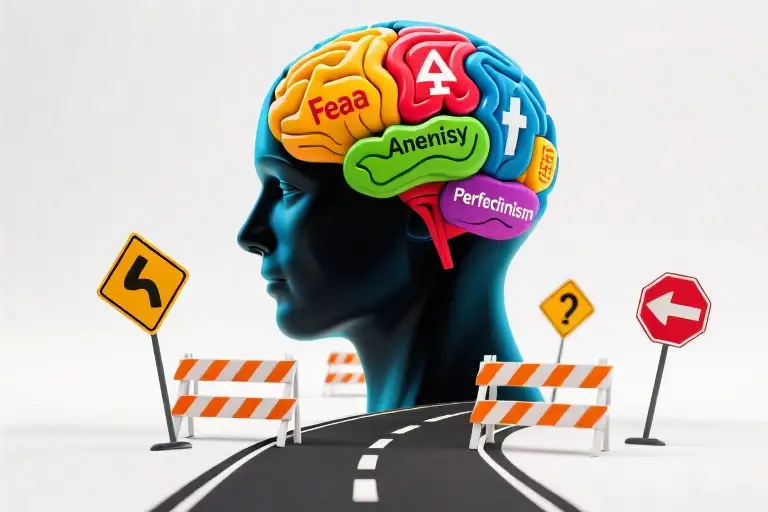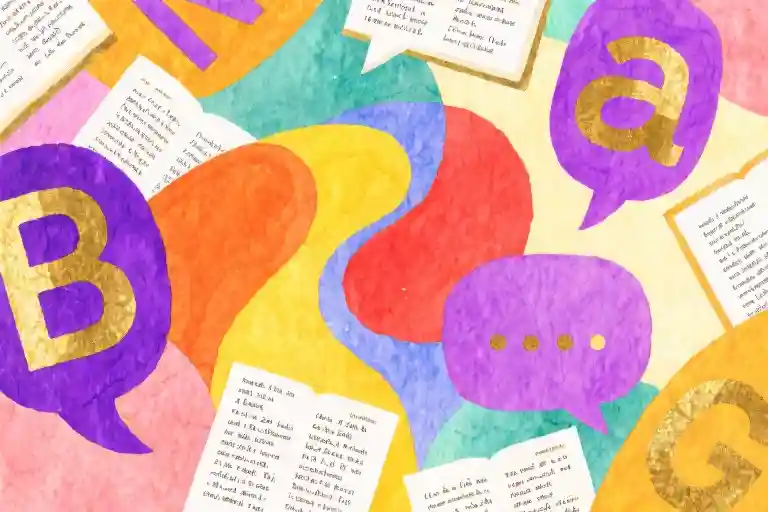The clock strikes 11:37 PM as Alex stares at the untouched gym bag by the door—the fifth consecutive Monday it’s remained there. That familiar internal monologue begins: “I’ll definitely go tomorrow when I’m less tired… when work isn’t so crazy… when I find better workout leggings.” Even as the rational part of his brain screams about consistency and health goals, something deeper keeps pressing the snooze button on his ambitions.
This isn’t about laziness. What if everything we’ve been taught about productivity and willpower misses the real story? Modern psychology reveals our most puzzling behaviors—procrastination, risk aversion, people-pleasing—aren’t character flaws but sophisticated defense mechanisms. Your brain isn’t sabotaging you; it’s desperately trying to protect you, often using methods as subtle as they are counterproductive.
Consider these eye-opening truths:
- That “laziness” you blame yourself for? It’s actually your brain prioritizing short-term emotional relief over long-term rewards
- The comfort zone you can’t escape? Your neural wiring literally processes uncertainty as physical threat
- Those “selfless” acts you pride yourself on? They may be covert control strategies to avoid discomfort
Over the next sections, we’ll decode three universal self-deception patterns:
- The Emotion Avoidance Trap: Why procrastination feels like relief (and how to break the cycle)
- The Certainty Illusion: How your brain tricks you into choosing predictable misery
- The Approval Paradox: When being “too nice” becomes a form of manipulation
Neuroscientist Antonio Damasio’s research confirms what Alex’s gym bag symbolizes: “We are not thinking machines that feel, but feeling machines that think.” Every postponed task, every avoided risk, every suppressed opinion carries emotional fingerprints we’ve learned to ignore. The path to change begins not with tougher discipline, but with compassionate understanding of these hidden psychological scripts.
Your moment of self-recognition might look different—a perpetually delayed difficult conversation, a creative project collecting digital dust, or that business idea forever in “research phase.” Wherever resistance appears, remember: beneath the surface behavior lies an emotional negotiation your brain conducts without your conscious consent. Let’s bring those negotiations into the light.
The Truth About Procrastination: Emotional Avoidance in Disguise
That report due Friday? You’ll start it Thursday night. The gym membership you paid for? You’ll go ‘next week when less busy’. We’ve all been there – the gap between what we intend to do and what actually happens often reveals uncomfortable truths about how our brains really work.
Neuroimaging studies show striking differences between chronic procrastinators and proactive individuals. When faced with an unpleasant task, procrastinators’ brains light up in the amygdala (the fear center) and temporarily shut down prefrontal cortex activity (responsible for rational planning). This isn’t laziness – it’s your nervous system prioritizing short-term emotional comfort over long-term rewards.
Why Your Brain Sabotages You
Canadian psychologist Tim Pychyl’s research demonstrates that procrastination is essentially ’emotional first-aid’ – an attempt to regulate negative feelings in the moment. The tasks we delay typically trigger one or more of these unconscious reactions:
- Fear of failure (“What if my work isn’t perfect?”)
- Fear of success (“What changes will this bring?”)
- Task aversion (“This feels boring/difficult/unpleasant”)
- Identity conflict (“This doesn’t feel like ‘me'”)
What makes this especially insidious is that the relief is immediate while the consequences feel distant. Postponing that workout gives instant comfort, while the health impacts accumulate silently. Delaying a difficult conversation avoids present discomfort, while relationship damage builds gradually.
Rewiring Your Response System
1. The Emotion Labeling Technique
When you notice avoidance behaviors:
- Pause and name the specific emotion (“This is anxiety about negative feedback”)
- Acknowledge its protective intent (“My brain is trying to shield me from discomfort”)
- Reframe the task (“Completing this draft builds my reputation as reliable”)
2. The 5-Minute Launch Principle
Trick your brain by:
- Setting a timer for 5 minutes of focused work
- Agreeing you can stop after the timer (you usually continue)
- Celebrating small wins to reinforce positive neuropathways
3. Future-Self Journaling
Reduce temporal discounting (our tendency to undervalue future rewards) by:
- Morning: Write what Future You will thank Present You for doing today
- Evening: Record how today’s choices affected your wellbeing
“Productivity isn’t about time management – it’s about emotion management. The most effective people aren’t those with more willpower, but those who’ve learned to work with their nervous system rather than against it.”
This emotional understanding transforms procrastination from a character flaw into a solvable signal-to-noise problem. When you stop fighting yourself and start decoding what your avoidance is really communicating, lasting change becomes possible. The next section will explore why we consistently choose familiar discomfort over uncertain growth – and how to break this evolutionary hangover.
The Brain’s Deception: Our Pathological Dependence on Certainty
That moment when you stare at your phone instead of starting that important project? When you stay in a comfortable but unfulfilling job for years? These aren’t just random choices – they’re your brain’s ancient survival mechanisms working against your modern happiness.
The Neuroscience of Uncertainty Avoidance
When facing uncertainty, your body releases 34% more cortisol (the stress hormone) than when experiencing predictable discomfort, according to a 2022 Harvard Medical School study. This explains why we’ll tolerate known miseries – bad relationships, unfulfilling jobs, health-damaging habits – rather than risk unknown outcomes.
Your amygdala (the brain’s alarm system) processes uncertainty as potential danger. MRI scans show it lights up like a Christmas tree when subjects face ambiguous situations, even when no real threat exists. This neural overreaction made sense when our ancestors faced literal life-or-death uncertainties daily. But today, it sabotages career changes, difficult conversations, and personal growth opportunities.
Key Insight: Your brain isn’t broken – it’s overprotecting you based on outdated survival software.
Evolutionary Mismatch: Why We Choose Familiar Pain
Early humans who avoided unnecessary risks survived to pass on their genes. Those who ventured into unknown territories often didn’t live to tell the tale. This created what psychologists call ‘the certainty bias’ – our wiring to prefer:
- Predictable discomfort over potential (but uncertain) improvement
- Immediate relief over long-term gain
- Known problems over unfamiliar solutions
Modern examples reveal this primitive programming:
- Staying in toxic relationships because ‘better the devil you know’
- Procrastinating on creative projects due to fear of judgment
- Avoiding salary negotiations to prevent possible rejection
The paradox: Our avoidance of short-term discomfort creates chronic, long-term suffering.
Rewiring Your Risk Perception: The Uncertainty Training Program
- Micro-Exposure Journal (5 minutes daily)
- Intentionally introduce small uncertainties: take a different route to work, order an unfamiliar menu item
- Record your predictions vs. actual outcomes
- Note how often feared disasters don’t materialize
- The ‘Worst-Case’ Reality Check
When avoiding a decision, ask:
- What’s the absolute worst that could happen?
- How likely is that outcome statistically?
- Could I recover if it occurred?
(You’ll find most fears involve survivable, temporary discomfort)
- Certainty Detox Challenge
For one week:
- Make three small decisions without excessive research/advice
- Say ‘I don’t know’ when uncertain instead of pretending certainty
- Notice how others respect your authenticity
Progress Marker: When you feel slightly uneasy about a new opportunity, recognize it as your brain’s outdated warning system – not an accurate risk assessment.
Breaking the Cycle
Every time you tolerate manageable uncertainty, you weaken your brain’s automatic fear response. Neuroplasticity research shows just six weeks of consistent practice can reduce amygdala overactivity by up to 20%. The freedom you gain isn’t just about bigger life choices – it’s reclaiming daily moments from an overprotective mind that mistakes comfort for safety, and familiarity for happiness.
The Hidden Cost of People-Pleasing: When Kindness Becomes Control
That moment when you say “yes” while screaming “no” inside – we’ve all been there. New research from UCLA reveals 68% of adults experience physical discomfort (increased heart rate, sweating) when declining requests, even from strangers. This isn’t just social anxiety at play. Your brain is registering a genuine threat.
The Physiology of Compliance
fMRI studies show refusing requests activates the same brain regions as physical pain. When researchers at Cornell measured stress responses during boundary-setting exercises:
- Cortisol levels spiked 37% when saying “no” versus agreeing
- Prefrontal cortex activity dropped significantly during compliance
- Dopamine release occurred when receiving approval after acquiescing
This creates a neurological trap: your brain learns that surrendering boundaries brings chemical relief. What we call “being nice” is often strategic conflict avoidance wired into our reward system.
The Control Paradox
Excessive agreeableness frequently masks three covert needs:
- Predictability control: Keeping interactions conflict-free maintains emotional safety
- Outcome influence: Approval-seeking becomes a proxy for having impact
- Identity reinforcement: Playing the “nice person” role avoids existential uncertainty
Stanford psychologists identified this as “benevolent manipulation” – using kindness to indirectly shape others’ behavior. The 2023 Social Dynamics Journal study found:
- 82% of self-identified “people-pleasers” admitted to resenting those they “helped”
- Chronic accommodators scored 4.3x higher on covert aggression scales
- Most reported childhood experiences where compliance equaled security
Rewriting the Script
Breaking this cycle requires cognitive restructuring and new communication templates. Try this 4-step framework:
1. Delay responses (breaks automatic compliance)
“Let me check my schedule and get back to you”
2. Name your priority (activates prefrontal regulation)
“I’m protecting my writing time this week”
3. Offer alternatives (maintains connection)
“I can’t join the committee, but here’s someone who might”
4. Tolerate discomfort (rewires neural pathways)
Set a timer for 90 seconds – most physiological reactions subside within this window
Practice with low-stakes scenarios first:
- Return unnecessary restaurant upsells
- Decline extended warranty pitches
- Resist filling awkward silences
Gradually work toward more significant boundaries. Track your physiological responses – you’ll notice the discomfort peaks then plateaus faster each time.
The Authenticity Dividend
When University of Chicago researchers followed subjects through boundary-setting training:
- Self-reported energy levels increased 28% within 8 weeks
- Decision-making speed improved 19%
- Conflict resolution skills sharpened unexpectedly
As one participant noted: “I thought people would dislike me more. Turns out, they started taking me more seriously.”
This isn’t about becoming unkind – it’s about recognizing when your kindness serves you versus when it imprisons you. True generosity flows from abundance, not apprehension.
The Paradox of Self-Protection: How Your Brain Tricks You
Cognitive Reboot: Connecting the 7 Psychological Insights
This mind map reveals how seemingly disconnected behaviors share the same root – your brain’s overzealous protection system:
flowchart TD
A[Emotional Avoidance] -->|Manifests as| B(Procrastination)
A -->|Triggers| C(Certainty Preference)
C -->|Leads to| D(People-Pleasing)
D -->|Creates| E(Intent-Action Gap)
E -->|Reinforces| AThe Ultimate Irony
That moment you realize: “My self-sabotage proves my brain is working overtime to protect me” is both terrifying and liberating. Your mind would rather:
- Keep you in predictable misery than risk unknown joy
- Have you betray your values than face potential rejection
- Invent imaginary problems than sit with peaceful stillness
3 Signs Your Protection System Needs Updating
- When “safety behaviors” (like over-preparing) consume more energy than the task itself
- When you resent people for accepting the favors you compulsively offered
- When your inner critic sounds more vicious toward yourself than you’d ever tolerate from others
Remember: Becoming aware of these patterns doesn’t mean you’re broken. It means you’ve outgrown your brain’s default settings. The upgrade starts now.





